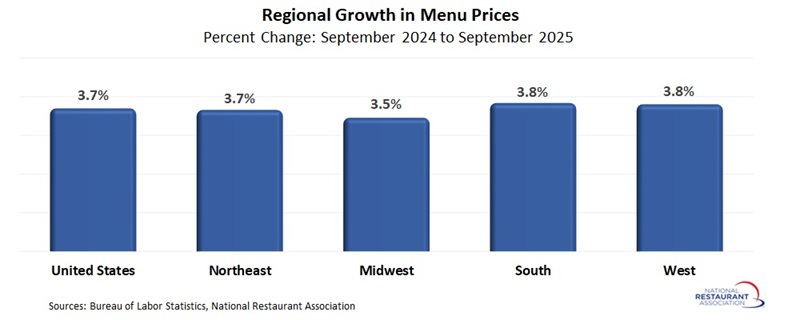Menu Prices
The headline Consumer Price Index (CPI) is up 3.0% year-over-year, the highest reading since January, ticking up from 2.9% in August. Core CPI, which excludes food and energy, rose 0.2% in September, down from 0.3% in the prior month and slightly below expectations. On a year-over-year basis, core inflation eased to 3.0%, down from 3.1%.
Price trends across core categories were mixed but generally higher in September. Notable increases included apparel (+0.7%), medical care services (+0.3%), transportation services (+0.3%), household furnishings and supplies (+0.2%), and new vehicles (+0.2%). In contrast, prices declined for used cars and trucks (-0.4%) and medical care commodities (-0.1%).
While inflation has edged higher and additional price pressures are anticipated, the Federal Reserve remains focused on signs of economic softening, particularly recent labor market weakness. As a result, the Federal Open Market Committee (FOMC) is expected to lower short-term interest rates by 25 basis points at its October 28–29 meeting, following the rate cut implemented on September 16–17.
Further rate reductions are projected, with additional easing likely at the December 9–10 meeting. Nonetheless, uncertainty remains elevated, and the Fed is expected to maintain a data-dependent approach in shaping future monetary policy decisions.
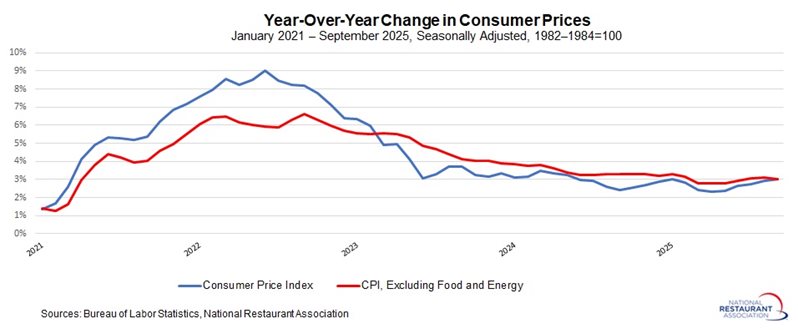
Grocery prices soared in September as menu prices slowed
Menu prices edged up just 0.1% in September, the slowest monthly increase since February 2024, following seven consecutive months of solid gains. So far this year, prices for food away from home have averaged monthly growth of 0.3%. On a year-over-year basis, menu prices have risen 3.7% since September 2024, down from 3.9% in August and the slowest pace since February. Despite the recent moderation, menu inflation remains firm, though well below the 8.8% peak seen in March 2023, the fastest rate in over two decades.
Grocery prices accelerated in September, rising 0.5% following a solid 0.4% gain in August, based on seasonally adjusted data. On a non-seasonally adjusted basis, grocery prices increased 0.6% and 0.3%, respectively, over the past two months. Year-over-year, the CPI for food at home rose 2.7% for the second straight month. Even so, grocery inflation has cooled considerably from its 13.5% peak in August 2022.
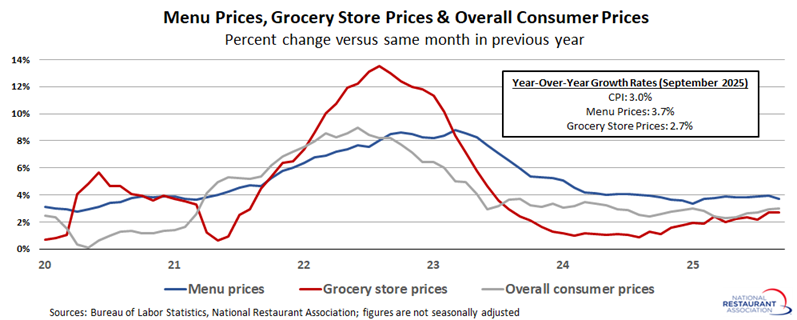
In the food away from home category, menu prices at limited-service restaurants rose 0.2% in September, following modest 0.1% increases in each of the prior two months. Year to date, prices at limited-service establishments have averaged monthly growth of 0.2%. In contrast, prices at full-service restaurants were unchanged in September, breaking a streak of seven consecutive monthly gains that had averaged 0.4% per month.
On a year-over-year basis, full-service menu prices increased 4.2% in September, down from 4.6% in August, the fastest annual pace since September 2023. Limited-service prices held steady at 3.2% year-over-year for the second straight month, marking a post-pandemic low. Inflation in both segments has moderated significantly from earlier peaks: full-service restaurant prices surged as high as 9.0% year-over-year in 2022, while limited-service prices peaked at 8.2% in April 2023.
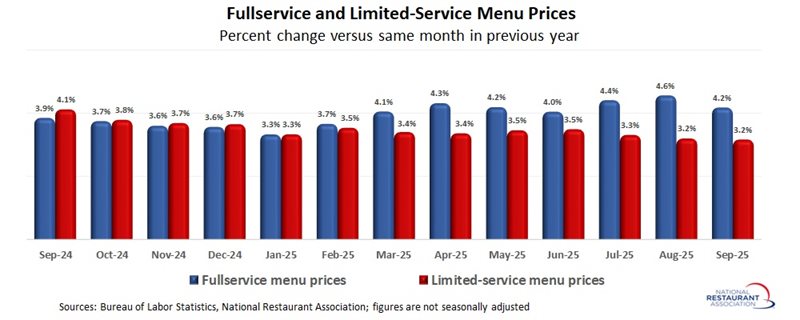
Within the broader food-away-from-home category, prices for food from vending machines jumped 1.6% in September, the strongest since March. At the same time, prices at employee sites and schools declined for the second straight month, down 0.2% in September. Prices at other food away from home locations increased 0.4%.
Year-over-year, prices at vending and mobile vendors rose 6.3% since September 2024, with prices for food at employee sites and schools increasing by 3.8%. The broader “other food away from home” category posted a 5.3% annual increase in prices in September year-over-year.
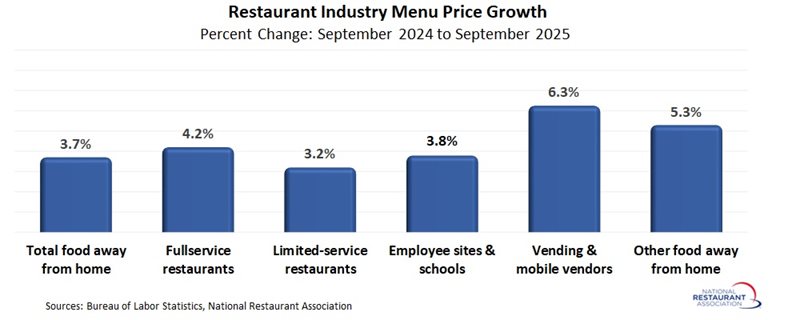
Regionally, menu prices in the Northeast and West rose by 0.2% in September, with 0.1% growth in the Midwest and South. The South and West have experienced 3.8% growth in menu prices over the past 12 months, with 3.7% growth year-on-year in the Northeast and 3.5% in the Midwest.
